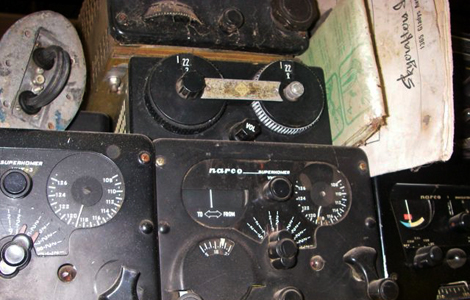Radio Flyer
In 1957, the Narco Superhomer was The Great New Thing.
On a recent visit to a private aircraft restoration workshop (this one is in Florida, but I won’t give away the restorer’s name or exact location), there was a bonus: While he was working on the airplane, he was quietly buying up really old aircraft components. On one shelf among dozens of other parts was an old Narco Superhomer, which combined Very High Frequency (VHF) voice communication with a VHF omnirange (or VOR) navigation receiver in a single unit. In 1957, this was the great new thing – VHF line-of-sight voice communication without any static noise (12 FULL CHANNELS! the ads shrieked) – and you could get the thing for under $500.
For a small private airplane to have even one radio was a fairly new proposition 50 years ago, but with the Narco unit (and its competitors like King Radio, among a dozen others) you could actually find your way in “blind” conditions in cloud or on a murky night. Pilots who flew on instruments navigated by interpreting numbers and pointers, which is all you got out of Superhomer. You’d add up what the numbers told you and thereby form a mental picture of where you were, a concept that later acquired a fancier name: situational awareness.
Restorers of classic aircraft like to make them historically accurate, so there’s always a market for something that may look like junk to anybody else. And there was something to be said for creating that mental image of the airplane, on course and tracking its planned route. Today the so-called glass cockpit provides a picture of the outside world and combines all the data to form a picture on a screen. That makes instrument flying much easier, and automatic pilots, flight management systems and computerized cockpits really have the effect of taking the human out of the loop.
Speaking of which, this American Airlines lecture from 1997 has been making the rounds in pilot chat rooms. It’s as good a summation of the issues involved in how humans should fly airplanes as any I’ve ever seen.
